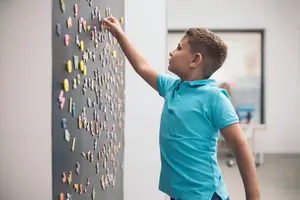Bettner Vision provides structured, medically focused eye exams for school-age children and teens in North Colorado Springs. Families in Briargate, Cordera, and nearby neighborhoods rely on these exams to understand how their child sees, how their eyes work together, and whether vision may be affecting comfort or classroom performance.
Vision Care That Supports Learning & Development

Exams Designed for Learning, Comfort, & Day-to-Day Demands
Pediatric exams at Bettner Vision evaluate more than clarity on an eye chart. Each visit reviews the visual skills that support reading, sustained near work, and screen-based learning, essential for students in local schools where academic and digital demands are high.
Your child’s eye doctor explains findings in direct, practical language and outlines next steps that genuinely fit your child’s needs at home and in the classroom. Parents receive clear guidance without ambiguity, helping them understand whether vision is contributing to symptoms such as fatigue, eye strain, or difficulty focusing.
What We Evaluate During a Pediatric Eye Exam at Bettner Vision
During your child’s exam, we assess how well each eye sees, how the eyes work together, and how efficiently they focus and track during reading and classroom tasks. This includes evaluating for nearsightedness, farsightedness, astigmatism, and functional skills that influence comfort and learning.
We also consider real-life factors common in this community, such as extended homework time, screen use, extracurricular activities, and teacher or parent observations. By integrating these details with clinical findings, we identify whether glasses, monitoring, or additional services may be appropriate.


Supporting Children With Progressive Nearsightedness
Families in northern Colorado Springs frequently seek care for children whose nearsightedness progresses year after year.
Bettner Vision offers established myopia management options such as orthokeratology (ortho-k), MiSight® soft lenses, and low-dose atropine.
These treatments are selected based on age, prescription, and exam findings, and parents receive a clear explanation of how each option works and what to expect over time.
Vision Therapy & Sports-Related Visual Needs
Some children read well on an eye chart but still struggle with focusing, tracking, or eye teaming, issues that can affect reading fluency, attention, and comfort. Bettner Vision provides vision therapy programs that address these functional skills through structured, goal-oriented sessions.
For active children participating in school sports or recreational programs, we evaluate how vision contributes to safety and performance. Our office also offers sports eyewear, including Rec Specs, for activities where durable, impact-resistant frames are important.

Steady Developmental Eye Care in Colorado Springs for Your Child’s Vision
For nearly two decades, Bettner Vision has supported families across North Colorado Springs with pediatric eye exams that prioritize clarity, communication, and long-term visual well-being. If your child is experiencing changes in comfort, focus, or school performance, a pediatric eye exam can help determine the right next step.
